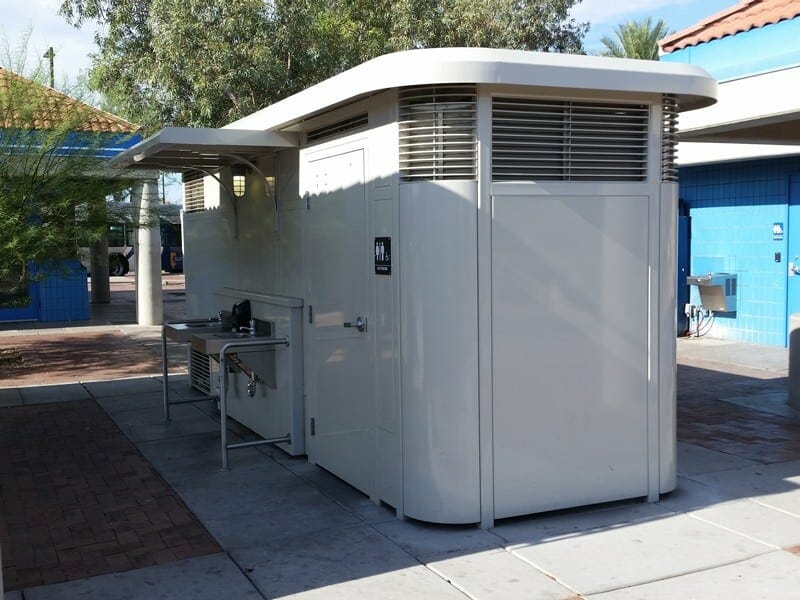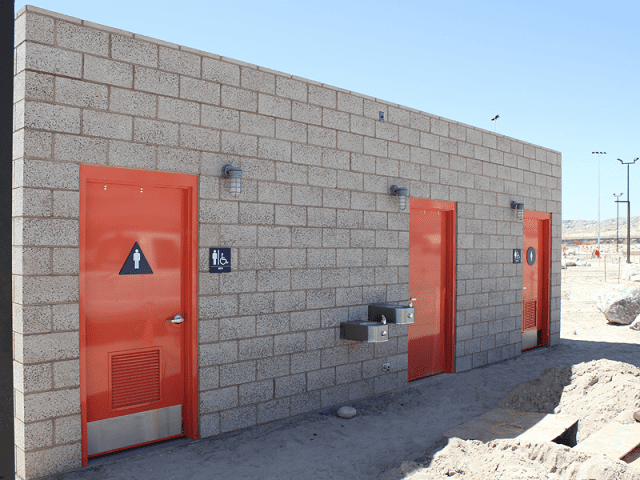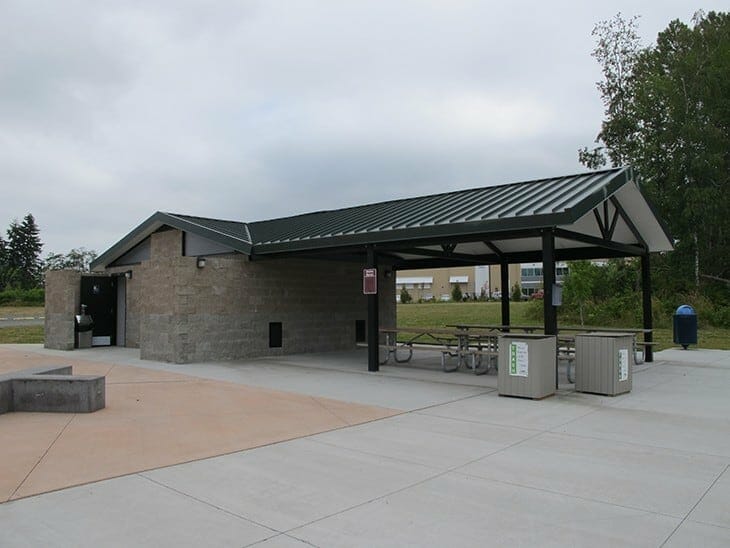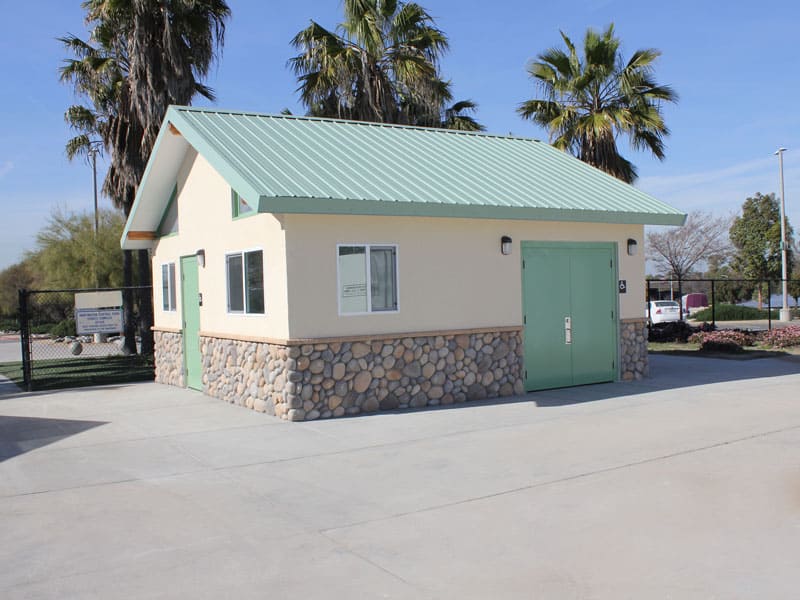
Romtec sells complete buildings and structures, handling projects from the design phase and through to construction and warranty. There are many steel components used by Romtec in all of our structures, and Romtec even sells entire pavilions and shelters constructed from steel. One task we work through with our customers is to provide the correct finish for the steel to protect it from rust and corrosion. There are several common options for steel finishing, and Romtec supplies them all. Each option provides distinct advantages, but options can have drawbacks like added cost or maintenance requirements. Here are our most common options for finishes on steel building components and what to consider with each choice.

Primed Steel Components Ready for Painting
The first steel finish is very basic. Romtec can deliver steel components primed for painting on-site by the owner or installing contractor. This provides customers with the flexibility to use paint that is already owned and have greater control of the final color choices. Romtec typically will recommend this approach when requiring exact color matches as paint batches can vary. On-site comparisons help achieve accurate color cohesion. The downside to this option is that the customer is responsible for procuring the paint, completing the work, and maintaining the quality of the finish.
Components Primed and Painted Prior to Building Package Shipment
The next steel finish includes priming and painting by Romtec prior to delivery. Having Romtec complete the final color painting dramatically simplifies projects. We handle all of the prep, priming, and painting with the product specific best practices for cure times. Romtec also ships these components with touch-up paint in the event that the materials are scratched in transit, during installation, or through general wear and tear of the building. This process has a higher cost than priming-only before delivery. Romtec must make sure that the paint is of a high quality and applied at an appropriate thickness to make sure the coating is durable enough to handle transit of the steel components.

Powder Coating for Extra Durability
Powder coating is another option for steel that does not use paint. Powder coating bakes on a thick finish that is harder than conventional paint, making it very durable. Despite the benefits to durability, powder coating does have some drawbacks. First, it must be baked on. Components must be sized to fit into an oven, which can limit some large structural components like steel columns and trusses. Also, powder coating is effectively permanent, but it can be damaged. If scratched, the steel will rust. Maintenance is only possible through field painting (which may not match) or removing the component and having it powder coated again.
An under coat option is available through Romtec for powder coated components. This offers increased durability to prevent some of the disadvantages of a single coat. This is option is very robust, but it comes at an increased cost. If a component is damaged in the field, the only option for maintenance is to paint over the powder coating. This can lead to mismatched colors and aesthetic issues. It is less likely with two coats, but there is always the potential in some locations for damage and/or vandalism

Galvanized Steel Components
Another option that is gaining popularity with steel components is galvanizing. Steel that is galvanized has a zinc coating that is protective against scratching, abrasions, and corrosion like rust. Galvanized steel can also be painted or powder coated for an added level of durability that is very robust. Steel components that are galvanized get dipped into a liquid solution super-heated to fuse zinc to the steel. This heated solution requires that steel components be engineered thick enough to not warp from the heat, which can add cost on some components. These components also need to have holes drilled into cavities for drainage after dipping. These holes need to be capped prior to installation. Finally like with powder coating, galvanizing limits the size of the components to the size of the galvanization tank. Larger components may not be possible or may suffer from higher costs and longer lead times due to fewer vendor options.
Stainless Steel Finish Options
The final steel finish option is not really a finish at all. It is stainless steel, which is available in different grades. Romtec typically offers 316 and 304 grades of stainless with 316 being the better grade of the two. Stainless steel is great at corrosion resistance which is maintained even when scratched. However, stainless will still rust over time. Stainless steel has a higher cost, and not every component is available to be manufactured from stainless steel. Contact Romtec to learn more about stainless steel components to learn which components are available.

Determining the Best Steel Finish
There are many considerations to take when evaluating the steel finish that is the most appropriate for your project. These considerations will include weather and environment. This is very important in wet or coastal environments where salt exposure is an issue. Vandalism is another important consideration as some finishes are easier to vandalize but also easier to maintain after vandalism. You should consider the aesthetics that exist onsite. Matching colors and other finishes exactly may only be available through a few finish options. Finally, cost and maintenance are always valuable considerations for any building projects.
Romtec has generated this option specification list to assist our customers with selecting a steel finish.
Steel Finishes Available From Romtec
If you have any questions about steel components or finishes, contact Romtec and we will help you determine the best finishes for your application!

Comments 2
The results looks really great and for sure they have strong foundation of those steels.
Typically, the primary steel is given one coat of primer paint and that serves as the final finish of the steel. Since all the primary structural steel is within the building and not exposed to any weather, the primer coat is sufficient to keep the steel protected.